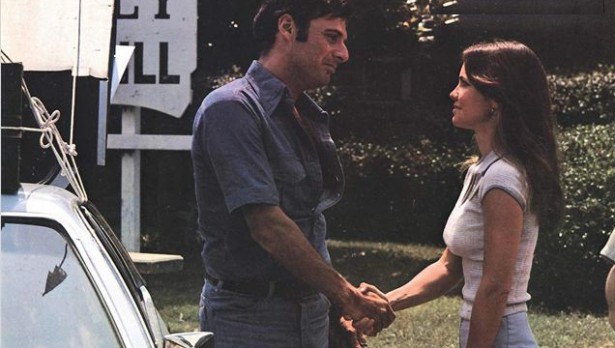
If you’re a regular New York Times reader (and even if you’re not), chances are you’ve seen last week’s Modern Love column. Five days after publication, it’s still the site’s second most-emailed article — in part because it reads like the best scene of your favorite romantic comedy.
The column describes a seemingly mythical psychology experiment conducted by Dr. Arthur Aron. His team of researchers brought two total strangers — a straight man and a straight woman — into a lab. They were told to answer a series of 36 increasingly personal questions (When did you last sing to yourself? What would you ask a fortuneteller? What’s your relationship like with your mother?), then look into each other’s eyes, uninterrupted, for four minutes. Having performed the ritual, the subjects got married six months later.
Reading about the study after a bad break-up, the column’s author, Mandy Len Catron, decided to test it out with a cute guy she knew from college and saw periodically at her climbing gym. The pair went to a bar, sheepishly agreed to ask each other Dr. Aron’s questions — which she likened to a frog in boiling water, not realizing it was getting hot until it’s too late. Then, at the end of the night, they walked to a bridge to stare into each other’s eyes for an exhilarating four minutes. They’re still in love.
I read the column during some down time at a four-day retreat for an organization I’ve worked closely with over the last several years, the Divestment Student Network. It’s safe to say that, at 9 p.m. on a very long day three, most of my thoughts had converged onto one track.
Not thinking much of it, the topic came back up on the drive home. The four of us in the car, minds still buzzing with questions from the weekend, had all read the column, and remarked on how it took some of the mystique out of finding love, or — for that matter — any sort of personal connections, romantic, platonic or otherwise. After talking about it for some time, it also occurred to us that organizers have known the secret to Dr. Aron’s study for decades. The work we’d done over the previous four days was all premised on one thing: relationships — deep, intimate, but not necessarily romantic relationships. Most of our time together had been spent building them.
“One-on-ones,” first systematized by Saul Alisnky, are the bread and butter of organizing. The idea is to get to really know someone, learn their story and uncover their self-interest in working on a given issue. Much like Catron’s “boiling frog” metaphor, one-on-one participants might unexpectedly find themselves spilling details about their childhood, or agreeing to pass out flyers. In some cases, one-on-ones also feel like a date; more than a few new organizers have been confused about the (sometimes thin) distinction between the two. Conversely, experienced organizers can be scarily charming dates.
Sitting in the car, we’d all had varying levels of exposure to and experience with organizing, even if not all of us have found romantic love. As it so happens, effectively running a national network can be simpler than effectively running your own personal life. The point of Catron’s story, we concluded, isn’t that there’s some magical formula for finding love (or, for that matter, organizing), but that being emotionally vulnerable — on a date or a one-on-one — is the key to meaningful connection, whether your goal is to get someone to a picket line or behind a white picket fence with two-and-a-half kids. Isn’t the point of dating, after all, just to divine whether two people have a shared self-interest in spending more time with each other?
You can’t choose who wants to build mass popular movements, although organizers have spent years trying, and you can’t create genuine relationships based on self-interest out of convenience alone. Organizing, though, “is a more pliable thing than we make it out to be.” Like dating, it’s more of a craft than an art. With practice, over time, it’s possible — simple even — to generate trust and intimacy, the feelings all successful organizations need to thrive.
If you think staring into someone’s eyes for four minutes is a weird way to end an organizing conversation, though, you’re probably right.
